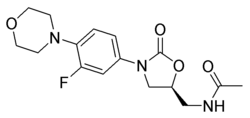PURPOSE: Objective of the study was to see the clinical efficacy of a combination therapy with linezolid (L), azithromycin (AZ), capreomycin (CPM) and other second-line anti-tuberculosis drugs in the treatment of multi-drug resistant pulmonary tuberculosis (MDR-TB).
METHODS: Ninety-one patients with MDR-TB were assigned to a study group (46 cases), treated with L, AZ, CPM, pyrazinamide (Z) , ethambutol (E) and ethionamide (Et), or a control group (45 cases), treated with streptomycin (S), Z, E and Et. The course of treatment was 18 months. Linezolid was given for 6 months and aminoglycosides (capreomycin/streptomycin) for 10 weeks.
RESULTS: 42 cases in the study group and 41 in the control group completed the treatment. The sputum negative conversion in the study group (81%) was significantly higher than in the control group (55%). The radiological improvement rate was 46% in the study group, significantly higher than that in the control group (27%) (P<0.01). The closure rate of the lung cavities in the study group (65%) was higher than in the control group (44%) (P<0.05). No significant difference was found in the side-effects between the two groups.
CONCLUSION: The regimen including linezolid, clarithromycin, capreomycin and other second-line anti-TB drugs was effective and safe for the patients with MDR-TB.
CLINICAL IMPLICATIONS: Linezolid, clarithromycin and capreomycin combination may be used along with other anti-tuberculosis drugs for the management of MDR TB.
DISCLOSURE: Sudhir Agarwal, None.
Sudhir K. Agarwal MD * Institute of Medical Sciences, Banaras Hindu University, Varanasi, India
COPYRIGHT 2005 American College of Chest Physicians
COPYRIGHT 2005 Gale Group



